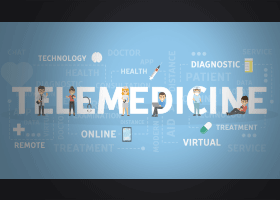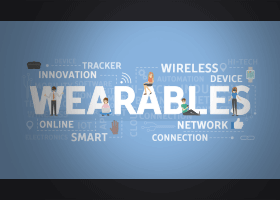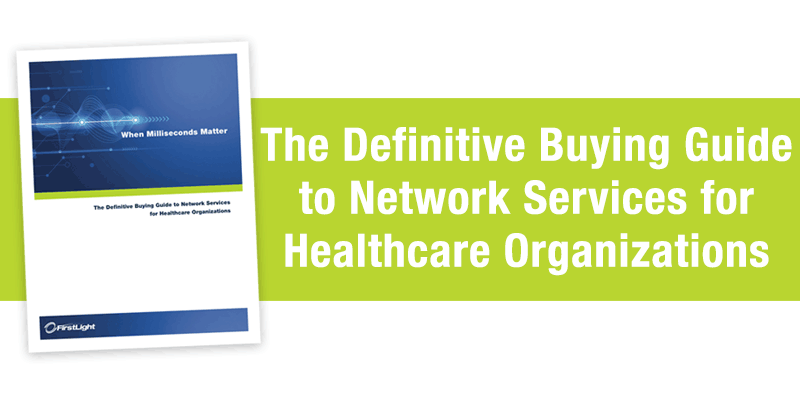
As technology continues to advance, healthcare providers have access to better information, more sophisticated tools, and increasingly powerful diagnostics. While these advancements offer many benefits, the volume of data generated by medical technology is creating serious storage challenges for the healthcare industry.
According to a 2018 report published by IDC, the volume of data in the healthcare industry is projected to grow faster than in any other industry through 2025. As a result, healthcare organizations will face the challenge of managing extremely large data sets.
In this blog post, we’ll take a look at the 3 advancements that are most responsible for the increasing volume of healthcare-related data: telemedicine, medical imaging, and wearables.
Rise of Telemedicine
 Telemedicine uses technology to provide clinical care from a distance. Until recently, telemedicine was used to treat patients in remote areas or in places lacking medical professionals. Telemedicine has since evolved into a tool that provides convenient care anywhere.
Telemedicine uses technology to provide clinical care from a distance. Until recently, telemedicine was used to treat patients in remote areas or in places lacking medical professionals. Telemedicine has since evolved into a tool that provides convenient care anywhere.
Along with video conferencing for real-time communication with doctors, telemedicine offers remote patient monitoring. Sensors or mobile apps capture a patient’s vital signs, such as blood pressure and cardiovascular activity, and the collected data is transmitted to healthcare providers.
Big data analytics play a significant role in telemedicine. Analyzing data collected in patients’ telemedicine sessions, intelligent medical software can identify risk factors for different conditions and recommend treatment options. This burgeoning amount of data requires a dependable, low-latency network as well as a dependable backup solution.
Use of Medical Imaging
Medical imaging (radiology) has long been used as a diagnostic aid. With advancements in telecommunications and artificial intelligence, medical images play a key role in diagnostics, cure, disease prevention, and medical care.
At a European Congress of Radiology press conference in spring 2018, Wiro Niessen, professor of Biomedical Image Analysis, spoke on AI’s and big data’s potential to add even more precision to health services and medicinal treatment, improving care for patients suffering from cancer, cardiovascular disease, and dementia.
“Largescale data analytics in longitudinal population neuroimaging studies, especially when combining imaging with other clinical, biomedical and genetic data, provide a unique angle to study the brain, both in normal aging and disease,” he said.
By 2030, Niessen noted, medical imaging will dramatically change the landscape of the healthcare system. This reality makes a relationship with your network and communications provider more important than ever, as network latency and speed, cloud backup, colocation, and disaster recovery solutions become increasingly important in the evolution of radiology and health care.
Wearables Trend
 Wearables like Fitbit and the Apple Watch series can monitor patients for events such as a fall or changes in heart rate. These devices help patients monitor their own health, and they provide valuable data for their healthcare providers.
Wearables like Fitbit and the Apple Watch series can monitor patients for events such as a fall or changes in heart rate. These devices help patients monitor their own health, and they provide valuable data for their healthcare providers.
For instance, heart rate data can be captured and sent to a physician by a patient. The data from wearables is already improving healthcare by reducing data-collection costs and making it easier for patients and providers to participate in clinical trials.
The wearables trend is catching on, and more people around the world are buying them. According to research firm Gartner, worldwide sales of wearable devices will grow 26% in 2019.
The Challenge
In the context of data storage, the bigger the data pool, the better the analysis. As more data is collected, shared, and analyzed by cognitive software, providers will gain the ability to provide even more precise and targeted care.
While this sounds promising, there is a conundrum. Medical images create extremely large file sizes, and the space needed for images is quickly exceeding organizations’ current storage capacity. To get the most clinical value from those large data pools, data analytics need dependable cloud access, significant data storage capacity, and a low-latency network.. More than ever, health care providers also need a solutions provider that understands the complexity of HIPAA compliance and next-generation firewall and data security.
A Purpose-Built Solution
There is no simple, one-size-fits-all solution to the challenge of healthcare data growth. To ensure that data storage, analysis, and security needs are met, the best choice is a purpose-built solution that addresses the unique requirements of a specific healthcare organization.
FirstLight understands the unique challenges of data management for healthcare organizations, so we can help design the right network, storage, and security solutions for your unique needs.
For more information, download our white paper…

vote for your 2 favorite charities




















